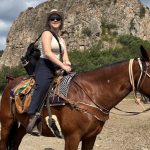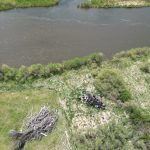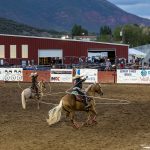Vail Daily column: Get to know the little brown birds in our backyards

Rick Spitzer | Special to the Daily |
Birding is a great hobby that everyone can take part in, but most birders (myself included) tend to be drawn to the flashy or colorful species because they can be easier to identify, and they seem the most interesting. But let’s not forget the birds that are flying under the radar. Little brown birds, as they are often called, are the birds that drive birders nuts; they are hard to identify and they seem to be everywhere! These little brown birds share similar colorations that can seem boring to the untrained eye, usually browns and whites. With that said, these species have plenty of attitude and character to make them worth a look, and they are not hard to find. The following is a description of a few of the little brown bird species you can find right in your backyards, and I’ll explain how to tell them apart.
Pine Siskin
Entering the ring first, weighing only 18 grams, is our smallest brown bird, the pine siskin. Siskins are most easily identified by the subtle yellow edges to their wings and tail, but can also be recognized by their noisy family groups. Siskins enjoy the company of others and always travel in flocks or family groups that love to chirp away while browsing for food. These birds are most commonly found snacking on thistle or small seeds.
The pine siskin has a unique slender bill compared to other birds in the finch-like family. This specialized beak is what allows it to snack on the smallest seeds.
Dark-Eyed Junco

Support Local Journalism
Our next little brown bird, also very small, at a length of only 17 centimeters, is the dark-eyed junco. There are a couple of ways to know if you do actually have these little birds hanging around in your yard. This bird can be identified by its distinct white streaks on the outside of the tail feathers. When taking off for flight, or flying away from you, you will see the two wide white stripes as they spread their feathers.
Secondly, you can identify these discrete little birds by their feeding behaviors. Juncos are ground feeders, so you rarely see them up on feeders. They prefer to do their foraging from down below where they can clean up after the messy birds perched above. These little brown birds aren’t only brown though, they also have gray mixed in, with chestnut brown shoulder pads. The males have dark slate colored heads whereas the female is more of a solid dingy grey with a little brown on her shoulders. These little birds aren’t too noisy and tend to keep to their families.
House Sparrow
The same cannot be said for our third little brown bird though, the house sparrow. The house sparrow has a generally unpleasant demeanor when it comes to other birds. Most people would consider them bullies. It is true that a lot of birds aren’t kind in nature to other species, but what makes this case a little harder to take is the fact that the house sparrow doesn’t actually belong here. It is native to Europe, but has been introduced to so many different places that it is now considered the most widely distributed bird species around the world.
House sparrows are masters at existing alongside humans. These are the birds you would most likely see flitting back and forth above parking lots of grocery stores or fast food joints. The male has a very distinct black patch on its throat, giving it the tuxedo look, with a brown back and grey underside. The females are very drab in color, with white and brown streaks; but they tend to travel in flocks, so if you see a male, you can usually identify the females. This species’ diet consists mostly of seeds and crumbs left behind by humans.
These common little brown birds might pale in comparison with the brighter, showier songbirds, but sometimes it’s nice to be able to give names to the species that we see around us every day. With this additional insight into the world of the more discrete among birds, I hope that you will experience the joy of getting to know the common, everyday species that share our backyards. As always, happy birding, everyone.
McCale Carter is a multi-season naturalist at Walking Mountains Science Center in Avon.










